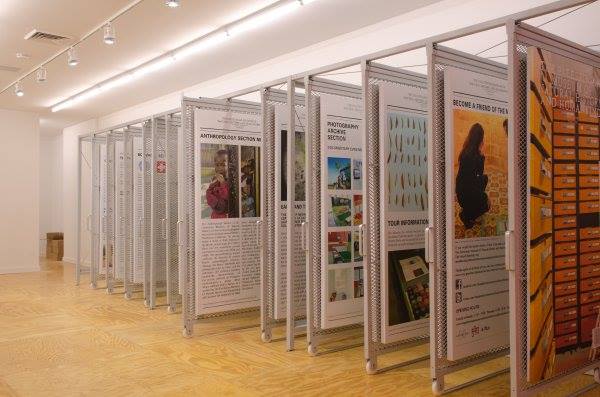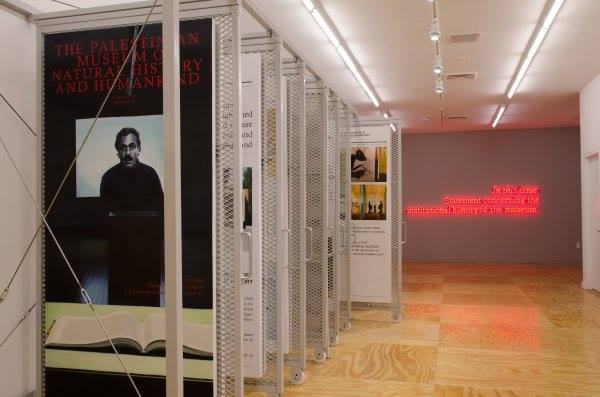Khalil Rabah
Sunday, 24 August 2014



“Khalil Rabah’s Palestinian Museum of Natural History and Humankind (2003–ongoing) is an elusive national museum that was established, in the words of its newsletter, “to inspire wonder, encourage discovery, and promote knowledge.” With departments spanning fields such as botany, geology, and paleontology, the Museum through its newsletter assumes a cheerful naturalism as it describes botanical research encountering territorial obstacles in the field, or considers the legal rights of trees and other natural objects. As a playful reading of the political reality of Palestine that also implicates the blissfully remote framing mechanisms of the natural history museum, we encounter a complex geological and geopolitical wink when its Earth and Solar System Department announces its fascination with how our world is “constantly being remolded by powerful forces beyond our control.”
For his exhibition at e-flux, Rabah presents the Summer 2011 issue of the Museum’s newsletter, which takes on three new forms: a printed copy of the twenty-four-page document stacked on the exhibition floor for visitors to take; a glaring red neon sign of the cover’s headline, In this issue: Statement concerning the institutional history of the museum, installed nearby as a stand-in exhibition title; and a new series of paintings based on pages of the Museum’s most recent newsletter, suspended in sliding archival racks. Here Rabah explores ways of both spatializing and personifying the Museum and the ideas it represents at an important moment of institutional reflection. Staging the display of these highly abstracted physical forms in a schematic representation of an art institution’s gallery and storage space, Rabah enacts a warped, cyclical process of materialization and dematerialization, ultimately implying the impossibility of an idea becoming form in the first place.
In a gallery adjacent to this storage space pages 7, 8, and 9 of the twenty-four page Summer 2011 newsletter have been extracted from the Museum archives to become a series of paintings, giving them and their content prominence over the remaining twenty-one pages. The three pages on display report on the Botanical Section’s recent international conference in Palestine, Conservation in the 21st Century: A New Geo-Political Science, which feature a debate on the intertwined destinies of architecture, education, and politics; and the Education Section’s news of victory in the Swiss Federal Supreme Court for five olive trees that had been refused recognition and citizenship by both the United Nations and the Canton of Geneva. In discussing contemporary issues of exile, naturalization, and the rights of stateless beings, the paintings paradoxically articulate the Museum’s own resolutions on these topics. In order to ask what the form of a territory or subject of study must be, the Museum inverts the question: What is it not?
Khalil Rabah was born in 1961 in Jerusalem and studied architecture and fine arts at the University of Texas. Rabah is a co-founder of Al Ma’mal Foundation for Contemporary Art in Jerusalem in 1998 and of the Riwaq Biennial in 2005, and is also the founder of The Palestinian Museum of Natural History and Humankind. He is also a member since 2010 of the curriculum committee of Home Workspace Program, a pioneering educational initiative in Lebanon launched by Ashkal Alwan. Rabah has participated in several biennials including the Istanbul (2005), Liverpool (2008), Venice (2009) and Sharjah (2010) biennials; as well as group exhibitions, most recently at the Queens Museum of Art, Brooklyn (2009); Mathaf Museum of Modern Art, Doha (2011); Arnolfini, Bristol (2011–12); Museum of Contemporary Art (MAC) Marseille (2012); and the Mori Art Museum, Tokyo (2012). His solo exhibitions include Review, Beirut Art Center (2012), The Third Annual Wall Zone Sale, Khalil Sakakini Cultural Center, Ramallah (2004); 50,320 Names, Brunei Gallery, London (2007); United States of Palestine Airlines, Home Works, Beirut (2007); and Art Exhibition, Ready Made Representations, Sfeir-Semler Gallery, Hamburg (2012).” – e-flux